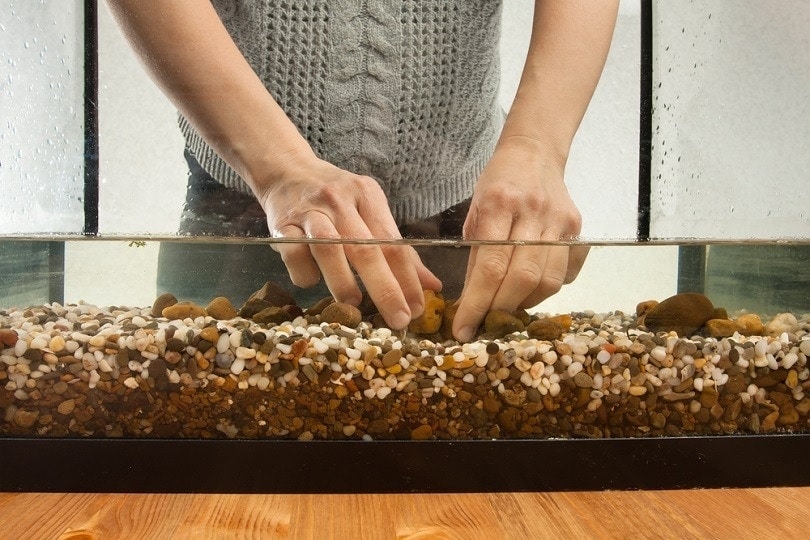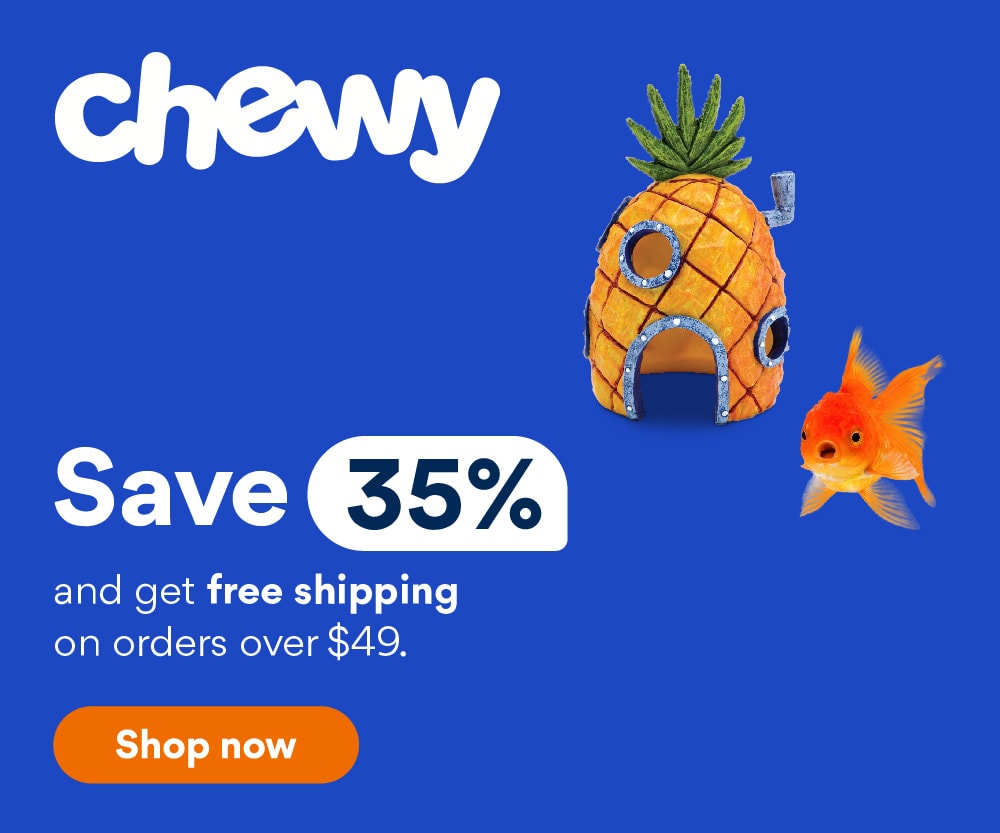5 DIY Aquarium Substrate Ideas You Can Create Today (With Pictures)

Updated on

There are dozens of types of aquarium substrates available on the market and knowing which one to choose can be pretty confusing. Once you settle on a substrate, you may have to be prepared to shell out a pretty penny to get your aquarium substrate at an appropriate depth for your tank’s needs.
That’s where DIY aquarium substrate comes in! Some aquarium substrates can even be made from things you already have, like topsoil, saving you money. It also ensures you end up with a substrate you like that fulfills your needs.
Purpose of Substrate

Why even put substrate in your aquarium? Substrate is a great addition to aquariums for a number of reasons. The first being that substrate supports the growth of plants in your aquarium. Many aquatic plants need their roots in soil of some kind, and substrate allows your plants to root and thrive.
Aquarium substrate can be a great place for the colonization of beneficial bacteria as well. Most substrates have a high surface area, which increases the real estate beneficial bacteria need to successfully colonize and reproduce.
The simplest benefit of adding a substrate to your aquarium is the environmental enrichment it can bring to your aquarium livestock. Some fish enjoy burrowing in substrate while others enjoy scavenging in and around substrate for snacks. Small invertebrates, like dwarf shrimp, feel safer with substrate and plants, which improves their health and reproduction. Whether your fish likes to pick up mouthfuls of substrate to spit back out or just likes to feel the sand between their toes, so to speak, substrate will improve the quality of your tank.
The 5 DIY Aquarium Substrate Ideas
1. DIY Aquarium Soil #1 by Cuteness

- Step One: Put your topsoil into a bucket and soak it with clean water until the water pools on top of the soil. Allow it to sit for a couple of days, drain, then do this again. After that, rinse the soil well. This will help remove fertilizers in the topsoil that you don’t necessarily want getting into your tank.
- Step Two: Lay the topsoil out in a thin layer on a clean tarp or blanket and allow it to dry completely. This may take multiple days.
- Step Three: Once thoroughly dry, pour the soil through a sieve or strainer to remove debris. You may need to break large pieces of soil apart by hand.
- Step Four: Combine the topsoil with potter’s clay at a ratio of 10:1. Add in water, preferably warm, and begin to combine the topsoil with the clay. Mix well and continue to mix until a thick batter-like texture has formed.
- Step Five: Add the mud mixture into your tank. It’s ok if there is some standing water in the tank after adding the aquarium soil.
- Step Six: Cap the soil with gravel or sand. This will keep your tank from being a muddy mess every time you clean or plant anything. Now you’re ready to get your tank planted and set up!
2. DIY Aquarium Substrate with Kitty Litter by Planted Tank

- Step One: Some people have had great success with using clay cat litter as an aquarium substrate. This should only be done with plain clay litter. Scented litter should not be used and litter made from any other substance, like walnut shells or sawdust, should not be used.
- Step Two: Put the kitty litter into a bucket or bowl and rinse well with clean water. Your goal is to remove as much of the clay dust as possible, so you may need to rinse multiple times or break the litter up into batches to ensure it’s thoroughly rinsed.
- Step Three: Once rinsed well, put the kitty litter into your empty tank and cap with sand or gravel, then set the rest of your tank up.
3. Garden Soil by MadeByKM
Using garden soil is a great way to make free aquarium substrate. It is already rich in nutrients and doesn’t have to be replaced nearly as often. It’s also great for growing live plants in your aquarium. This quick video shows you how to source and prepare garden soil for use in your aquarium.
4. Aquascape DIY Soil Substrate by GreenEcoSpace
Here’s another great video showing how to use soil from your own backyard for DIY aquarium substrate. This video shows how to sieve the soil to remove any wood, rocks, or insects that may be in it and stresses returning them to nature. The soil is then made into larger chunks, then dried out for use in the aquarium. If you like this video, the channel is full of other eco-friendly aquascape videos.
5. Builder’s Sand by Forrest’s Fishroom – Cichlidman09
Sand is an affordable and versatile option for a DIY aquarium substrate, creating a natural-looking environment suitable for various fish species that prefer to burrow or sift through the substrate. Opt for aquarium-safe varieties like pool filter sand or play sand to prevent harmful chemicals or sharp particles. If you have sand left over from a building project or sandbox, you can use that, otherwise you may have to buy some. So, this one may not be entirely free, but it is relatively cheap.
Things to Avoid
- Peat: Peat actually can make a great addition to aquariums, but only if you are trying to drop the pH. Peat will make your aquarium acidic, so if this isn’t your goal then avoid peat for your tank.
- Dyes: Dyes, like those used on colored play sand, can come off over time. This can discolor your tank water and even other items within the tank. Some dyes are dangerous for aquatic plants and animals.
- Scents: Scents are commonly found in cat litter and can be found in some children’s play sand as well. These chemicals can leach into your aquarium water and potentially injure or kill your aquatic pets.
- Pesticides: If you’re purchasing soil or gravel from a garden center and you notice it’s being stored downhill from the pesticides, it might be a good idea to skip that store for now! Pesticides can get into the water and roll downhill, getting onto anything it comes in contact with.
- Fungicides: Similar to pesticides, fungicides can easily get onto other products, leading to the death or injury of plants or animals in your aquarium.
- Cleaning chemicals: Many cleaning chemicals are not aquarium safe, which is why the recommendations for substrates usually call for rinsing but not for cleaning. Even gentle dish soap can be dangerous for the health of your aquarium, so cleaning chemicals should be avoided unless they are listed as aquarium safe.
Final Thoughts
The easiest way to go about an aquarium substrate is to purchase the aquarium-marketed versions from pet and fish stores. However, these often carry the price markup of specialty products and you may be able to save money and end up with a healthier aquarium by doing some DIY aquarium substrates. If you are unsure of the safety of a product, though, don’t use it! There are lots of safe options available to you that won’t risk the health of your aquarium.
You might want to check out some of our top-trending posts:
- 10 Best Outdoor Fish Tank Ideas (with Pictures)
- 10 DIY Aquarium Theme Ideas You Can Create Today! (with Pictures)
Featured Image Credit: rodimov, Shutterstock










